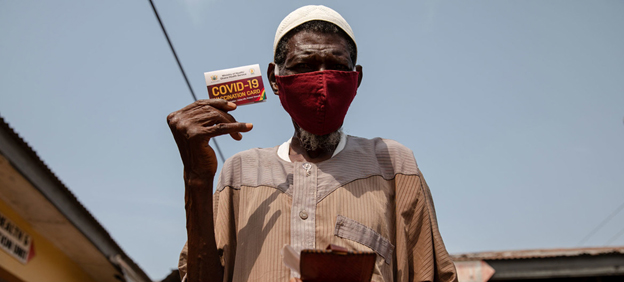The Covid-19 Timebomb - Dispelling the Single- Story Humanitarian Narrative for Africa

BRIGHTON, UK, Aug 09 (IPS) - An article published in April 2020 by the World Economic Forum warning that Africa was facing a Covid-19 time bomb was widely shared among the humanitarian sector, with increasing alarm.
Some anticipated a perfect storm in terms of violence against children while others talked about the potential for a hunger pandemic in the Sahel. But none of these catastrophic scenarios have been borne out in either the first or second waves of the pandemic in Sub-Saharan Africa.
There are current concerns regarding an increase of third wave cases, but so far the continent has recorded a far lower fatality rate than Europe.
Yet, despite the many innovations developed by Africans during the pandemic, there has been no acknowledgment that African agency played a part in keeping the numbers of dead and dying from Covid-19 in check.
Instead, this lower fatality rate was attributed to fate, the natural setting or demographics. It is another example of the humanitarian sector acting as a willing accomplice to racial stereotyping.
Instead of challenging an over simplified or “single story” narrative (to use Chimamanda Adichie’s words), it opted to share on a disempowering, attention grabbing headline to describe how Covid-19 had impacted Sub Saharan Africa.
It points to the glaring gap in stories relating to African ingenuity and innovation - despite the number of examples that exist. These were highlighted in the range of responses to Covid-19 seen across the continent.
For example, an ongoing project on African resilience found that , villagers in Côte d’Ivoire dealt with the heavy impact of the pandemic on crop production and trading by borrowing money from micro-finance institutions, leveraged by trading on their personal connection and reputation.
By mobilising their social capital, villagers were able to foreground trust and hope as bankable commodities in rural agriculture.
This innovation challenges the traditional relationship between micro-finance institutions and villagers, and continues to redefine lending procedures even after lockdown. But this type of social innovation and community resilience is barely reported by the media and the humanitarian world.
For too long the humanitarian sector were part of reinforcing a vision of Africa as a rural continent plagued by civil war, state corruption, and suffering from the effects of climate change.
This narrative does not allow for any recognition of how the continent is changing driven by trends including, high population growth and urbanisation, digitisation and economic advancement.
The emergence of a middle class in countries including Côte d’Ivoire, Nigeria, South Africa, Kenya and Tanzania illustrate the continent’s potential for growth and economic innovation. The failure of the humanitarian sector in general to acknowledge such trends has significant ramifications to the type and nature of work undertaken.
The importance of recognising and dealing with African agency and diversity are fundamental questions for the humanitarian sector, especially at a time where localisation and the humanitarian-development nexus are put forward as the main paradigm and policies to address the sectors’ effectiveness and legitimacy.
The dominance of localization in humanitarian work relies on a simplified understanding of what ‘the local’ is and who ‘the locals’ are, which can result in problematic backlash.
Other research on humanitarian protection in DRC showed that many organisations working in Eastern DRC would categorise Lingala-speaking people from Kinshasa (2400km away) as locals and hire them as local experts, even when they do not speak Swahili and have little understanding of the local context.
Those that are hired have to ‘to speak in the northern way’, that is, to use the jargon and standards developed by international organisations (Sphere, Core Humanitarian Standards), or guidelines and processes (cluster mechanisms, response cycles and Humanitarian Response Plans, Humanitarian Needs Overviews).
As a result, participation of 'affected communities' are superficially sought as an 'add on' rather than essential to better understanding of local contexts.
The challenges for the sector are to go beyond creating single story narratives and prioritise instead space for African agency and diversity. Of course, funding and political barriers complicate things.
Justifying aid expenditure to domestic audiences means that donors have a low tolerance for financial and reputational risk. As such, aid continues to be provided on the basis of what agencies and donors want to give rather than on what people say they need and want.
In such a supply-driven relationship, paternalistic attitudes that donors know best, make a mockery out of any attempts to enable localisation.
We need a better way forward, focusing on transdisciplinary, decoloniality and reinforce the partnerships between humanitarians and researchers on the one hand, and the collaboration amongst Global North and practitioners and researchers on the other.
To move away from a narrow, single-story narrative of Africa, humanitarian and research relations must at their most fundamental level change from functional and ad hoc collaborations to more equitable partnerships.
Follow @IPSNewsUNBureau
Follow IPS New UN Bureau on Instagram
© Inter Press Service (2021) — All Rights Reserved. Original source: Inter Press Service
 Global Issues
Global Issues